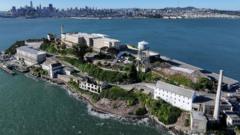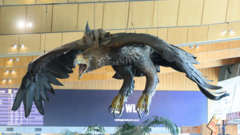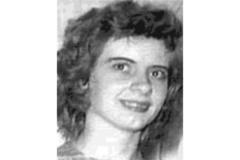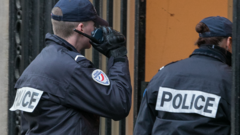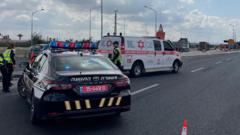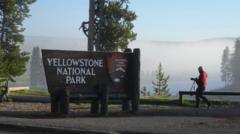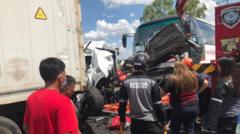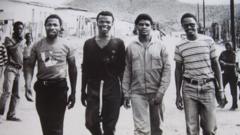Analysis shows that operational modifications at Sea World compromised safety measures as two helicopters collided, resulting in the deaths of four people, including British tourists.
Faulty Antenna Linked to Australian Helicopter Collision That Claimed Four Lives
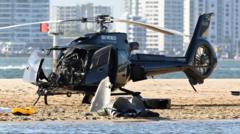
Faulty Antenna Linked to Australian Helicopter Collision That Claimed Four Lives
Investigators reveal that a defective radio antenna contributed to a tragic mid-air helicopter accident, leading to fatalities at a Gold Coast theme park.
A faulty radio antenna has been identified as a contributing factor in a catastrophic mid-air helicopter collision at a theme park and resort in Australia, where four individuals lost their lives, and several others sustained serious injuries. The incident occurred in January 2023, near Sea World on the Gold Coast, a key tourist destination in Australia.
The investigation conducted by Australia's Transport and Safety Bureau (ATSB) revealed that one of the helicopter pilots failed to receive a crucial radio communication that preceded the crash. Over time, changes made by Sea World purportedly to enhance their helicopter services weakened existing safety protocols, leading to increased risks during flight operations.
The tragic event unfolded approximately 20 seconds after one helicopter took off while another was landing. All four deceased individuals were passengers in the helicopter taking off, while the second aircraft was able to execute an emergency landing, resulting in various injuries among its passengers.
The ATSB report indicated that Sea World had recently attempted to modernize its service by introducing a second helipad and larger helicopter models. However, these changes inadvertently undermined the pre-existing risk controls designed to maintain safe separation between helicopters.
One of the helicopters had a malfunctioning antenna at the time of takeoff. Reports show that while the pilot on the ground was preoccupied with loading passengers, he did not receive a radio call from the landing helicopter. A crew member later informed him that the airspace was clear, which was misleading by the time the helicopter took off.
Conversely, the pilot landing after a scenic flight noticed the helicopter on the ground but did not perceive it as a threat. The unreceived "taxiing" radio call likely prevented him from reassessing the situation and recognizing the departing helicopter as a potential collision risk, leading to the tragic impact.
Among the deceased are Diane Hughes, 57, and her husband Ron Hughes, 65, from Neston, Cheshire, who were on vacation to visit relatives after being apart due to COVID-19. Also among the victims was Sydney resident Vanessa Tadros, 36, and Sea World Helicopters pilot Ashley Jenkinson, 40, originally from Birmingham.
Six others were reported to have sustained serious injuries while three more received minor injuries during the collision. Passengers aboard the helicopter returning from the scenic flight praised their pilot's heroism for landing the aircraft safely post-collision.
The Australian Transport Safety Bureau's findings included 28 recommendations highlighting crucial lessons for both aviation operators and pilots. According to ATSB Chief Commissioner Angus Mitchell, a fundamental takeaway is the importance of managing operational changes in aviation with stringent processes to avoid unintended safety risks. Through diligence and enhanced communication, future accidents may be prevented, safeguarding passengers and crew alike.



